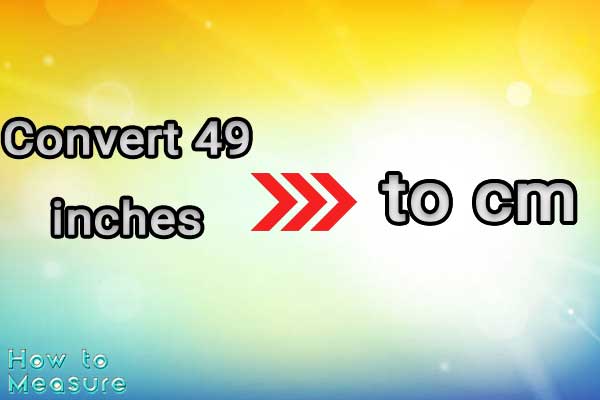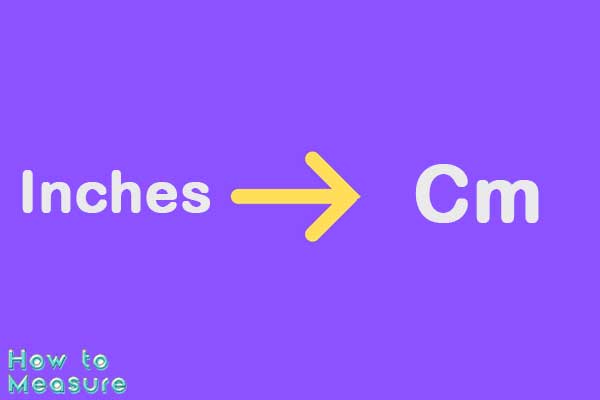

In today’s globalized world, knowing how to convert between different units of measurement is essential. Whether planning a DIY project, working on engineering drawings, or simply exploring various cultural norms, understanding the conversion from inches to centimeters is crucial. In this comprehensive guide, we’ll walk you through the process step-by-step, providing you with valuable insights and practical examples. Let’s dive in and make converting inches to centimeters a breeze!
Let’s explore the fundamental concepts behind the inch-to-centimeter conversion to begin our journey. Inches and centimeters are both Length units but belong to different measurement systems. The inch is primarily used in the United States and a few other countries, while the centimeter is part of the metric system, widely adopted worldwide.
The Relationship Between Inches and Centimeters
Before the conversion, let’s establish the relationship between inches and centimeters. One inch is equal to 2.54 centimeters. Keeping this conversion factor in mind will be essential throughout our guide.
Converting inches to centimeters is a straightforward process using a simple mathematical formula. The inch and centimeter are both Length units, with the inch commonly used in the United States and some other countries, while the centimeter is the standard unit of Length in the metric system. To convert inches to centimeters, you can use the following formula:
1 inch = 2.54 centimeters
Here’s a step-by-step guide on how to convert inches to centimeters:
Step 1: Understand the Conversion Factor The conversion factor between inches and centimeters is 2.54. This means that for every 1 inch, there are 2.54 centimeters.
Step 2: Set Up the Conversion Equation To convert inches to centimeters, you can set up the following equation: Length in centimeters = Length in inches × 2.54
Step 3: Perform the Calculation and multiply the Length in inches by the conversion factor (2.54) to get the equivalent Length in centimeters.
For example, let’s say you have a length of 10 inches and you want to convert it to centimeters: Length in centimeters = 10 inches × 2.54 = 25.4 centimeters.
So, 10 inches is equal to 25.4 centimeters.
If you’re working with fractions of an inch, you can still apply the same conversion factor. For instance, if you have a length of 6.5 inches: Length in centimeters = 6.5 inches × 2.54 = 16.51 centimeters
Step 4: Round the Result (if needed). Remember that converting inches to centimeters may result in a decimal value. Depending on the level of accuracy you need, you might want to round the converted Length to a certain number of decimal places.
In summary, converting inches to centimeters involves multiplying the Length in inches by the conversion factor of 2.54. This simple conversion allows you to easily switch between these two units of Length, which can be especially useful when working with measurements in different systems or when using tools that display measurements in different units.
In today’s digital age, online conversion tools can instantly convert inches to centimeters. These tools are easy to use and provide accurate results.
There are approximately 0.393701 inches in a centimeter. This conversion factor is commonly rounded to 0.39 inches for simplicity in everyday calculations. This means that when you convert a length from centimeters to inches, you multiply the Length in centimeters by 0.39 (or 0.393701).
1in = 2.54cm/in × 1in = 2.54cm
Conversely, you can use the conversion factor of 2.54 centimeters per inch to convert from inches to centimeters. This is because 1 inch is equal to 2.54 centimeters.
Here’s the mathematical relationship for easy reference:
1 inch ≈ 2.54 centimeters 1 centimeter ≈ 0.39 inches (or 0.393701)
These conversion factors are used to convert measurements between the imperial system (inches) and the metric system (centimeters), and they play a significant role in various fields such as science, engineering, construction, and everyday measurements.
There are exactly 2.54 centimeters in an inch. This conversion factor is a fundamental relationship between the imperial and metric measurement systems. When you convert a length from inches to centimeters, multiply the Length in inches by 2.54.
Conversely, to convert from centimeters to inches, you can use the reciprocal of this conversion factor: 1 inch divided by 2.54 equals approximately 0.393701 inches.
In mathematical terms:
1 inch = 2.54 centimeters 1 centimeter ≈ 0.393701 inches (or approximately 0.39 inches)
This conversion factor is widely used in various fields, including science, engineering, healthcare, and international communication. It allows seamless conversion between the two measurement systems, enabling accurate and consistent measurements across different regions and contexts.
Navigating the world of measurements can sometimes feel challenging, especially when dealing with different units like inches and centimeters. Fortunately, user-friendly online tools are available to effortlessly convert measurements from one unit to another. One such tool is the “How to Measure” online converter, designed to provide accurate and reliable inches to centimeters conversions at your fingertips.
Step 1: Access the “How to Measure” Converter
Begin by visiting the “How to Measure” website. You can find it easily by entering “How to Measure inches to cm converter” into your preferred search engine. The site’s clean and intuitive interface ensures a seamless user experience.
Step 2: Input the Measurement
Upon landing on the “How to Measure” converter page, you’ll be greeted by two input fields labelled “Inches” and “Centimeters.” In the “Inches” field, enter the measurement you wish to convert whether it’s a length, dimension, or size, type in the value you have in inches.
Step 3: Witness Real-Time Conversion
As you input the measurement in inches, you’ll notice the “Centimeters” field updating in real-time, displaying the equivalent measurement in centimeters. This instant conversion provides immediate feedback, allowing you to visualize the relationship between the two units.
Step 4: Review and Refine
Take a moment to review the converted measurement in centimeters. Verify that the value is accurate and aligns with your expectations. If you need to adjust the input or use a rounded value, the converter accommodates these preferences.
Step 5: Explore Additional Features
The “How to Measure” converter offers more than just basic conversion. Depending on the site’s features, you might have access to customization options, historical conversions, or even the ability to convert centimeters back to inches.
Step 6: Utilize the Result
Once satisfied with the converted measurement in centimeters, you can confidently use it for your intended purpose. Whether collaborating with international colleagues, working on a DIY project, or making online purchases, the precise conversion empowers you to make informed decisions.
In a world where accurate measurements are essential, the “How to Measure” online inches-to-centimeters converter streamlines the process, enabling you to convert between these units effortlessly. Whether you’re a professional, a student, or simply curious about measurements, this tool provides a dependable way to bridge the gap between inches and centimeters.
Converting inches to centimeters is a practical skill that finds applications in various real-life scenarios. From everyday activities to specialized fields, here are some real-life examples that illustrate the importance of converting inches to centimeters:
In all these scenarios and many more, converting inches to centimeters is a valuable skill. It enhances accuracy, aids in effective communication, and enables better decision-making across various aspects of life and work.
Converting inches to centimeters serves several practical purposes, particularly in international communication, scientific research, engineering, and everyday measurements. Here are some reasons why converting inches to centimeters is important:
Converting inches to centimeters is vital for achieving global standardization, facilitating communication, enhancing accuracy, and ensuring compatibility in various fields. Whether in scientific research, trade, education, or day-to-day activities, understanding and performing this conversion is a valuable skill contributing to effective communication and problem-solving.
Conclusion
In conclusion, knowing how to convert inches to centimeters is an essential skill with widespread applications in various fields. Whether travelling, studying, or working on projects, understanding this conversion will make your life easier and more efficient. By following the conversion formulas and using online tools, you can easily convert inches to centimeters. Embrace the metric system’s convenience and versatility, and let your measurement conversions be accurate and hassle-free!
FAQs about Converting Inches to cm
Q: Why is it essential to know how to convert inches to centimeters?
A: Knowing how to convert inches to centimeters is crucial for various reasons, including international travel, educational purposes, and engaging in crafts and DIY projects. It enhances your versatility and adaptability in different situations.
Q: Can I use an online conversion tool to convert inches to centimeters?
A: Yes, plenty of online conversion tools are available that can quickly and accurately convert inches to centimeters. These tools are user-friendly and require no manual calculations.
Q: Are inches and centimeters used interchangeably in different countries?
A: No, inches and centimeters belong to different measurement systems. Inches are primarily used in the United States and a few other countries, while centimeters are widely used in the metric system worldwide.
Q: Is the conversion factor from inches to centimeters always 2.54?
A: The conversion factor from inches to centimeters is constant at 2.54. This value is derived from the metric system’s relationship between the inch and centimeter.
Q: How can I convert a fraction of an inch to centimeters?
A: To convert a fraction of an inch to centimeters, divide the fraction’s numerator by the denominator to obtain the decimal representation of the fraction. Then, multiply the decimal value by 2.54 to get the equivalent measurement in centimeters.
Q: Are centimeters more precise than inches?
A: Centimeters are considered more precise than inches due to the smaller unit increment. The metric system, which includes centimeters, allows for easier and more accurate measurements in scientific and technical fields.